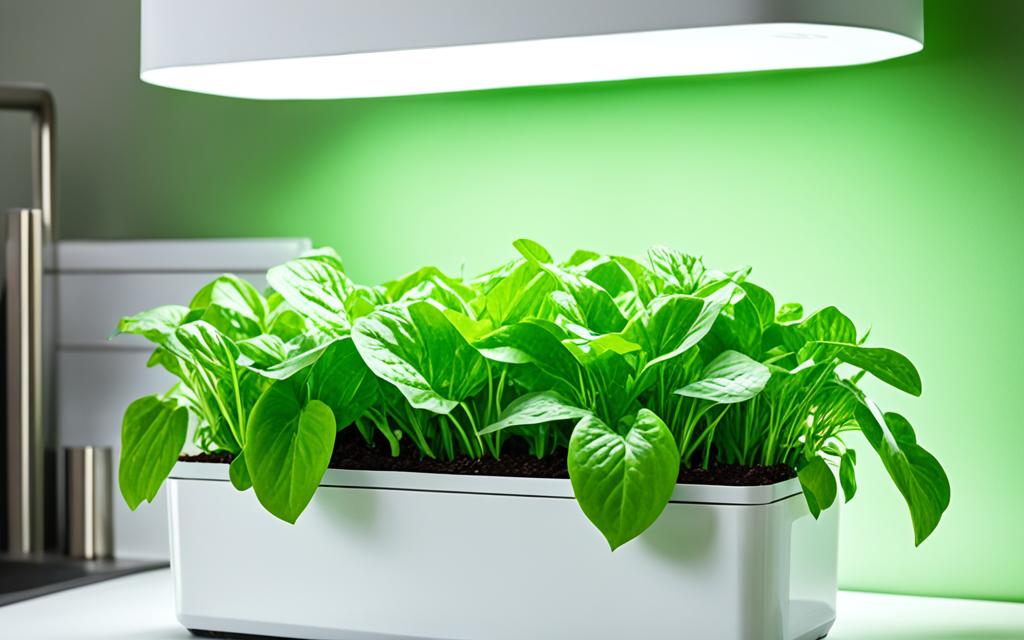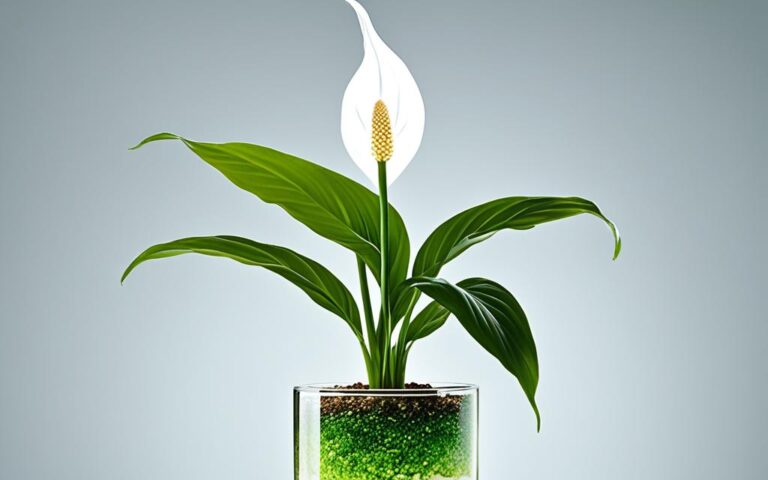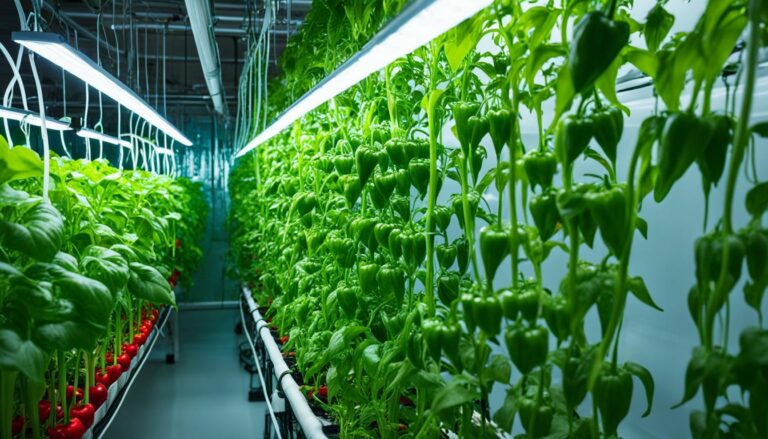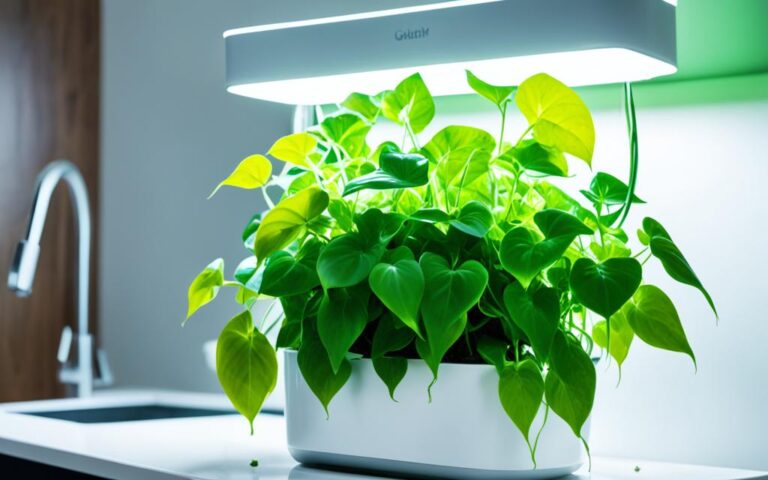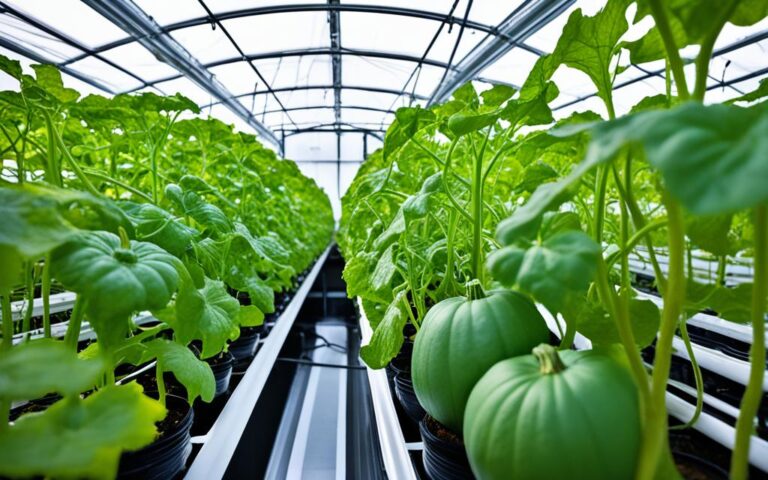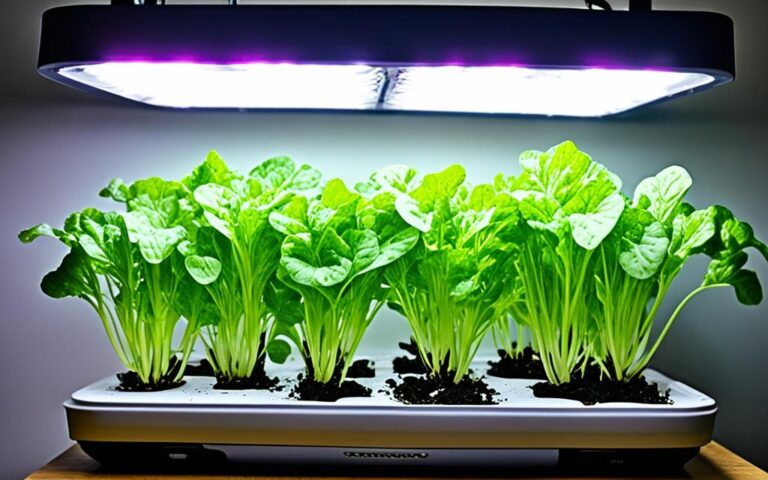Hydroponic Sorrel: Growing Tips and Benefits
Did you know that one cup of hydroponic sorrel has almost 130% of the daily vitamin C you need? This leafy green is a treasure in indoor gardening. It’s packed with nutrients and offers many health and culinary benefits. Discover how to grow hydroponic sorrel and enjoy its tangy taste and health perks all year.
Key Takeaways
- Hydroponic sorrel is a nutrient-dense leafy green that thrives in soilless cultivation
- Sorrel varieties like broad leaf, French, and red-veined are well-suited for hydroponics
- Hydroponic sorrel is rich in vitamins A, C, and potassium, offering numerous health benefits
- Hydroponic cultivation allows for year-round production of this versatile herb
- Sorrel’s distinct sour flavor makes it an excellent addition to a variety of dishes
Introduction to Hydroponic Sorrel Cultivation
Sorrel is a popular herb in hydroponic gardens for its unique taste and health benefits. It grows well in a controlled hydroponic setup. This makes it perfect for city folks and those with little garden space.
What is Sorrel?
Sorrel is a perennial herb from the Rumex family, found in Europe and North America. It’s known for its bright green leaves and a tangy flavor. This adds a special zest to many dishes.
Varieties of Sorrel Suitable for Hydroponic Gardening
For hydroponic sorrel, three main varieties stand out:
- Broad Leaf (or Common) Sorrel – This type has big, spoon-shaped leaves with a classic sorrel taste.
- French (or Buckler) Sorrel – It has smaller, rounded leaves and a milder flavor, great for salads and sauces.
- Red-Veined Sorrel – Known for its leaves with bright red veins, it adds a beautiful look to dishes.
These sorrel types bring different flavors and looks to the table. Hydroponic gardeners can pick the one that suits their taste best.
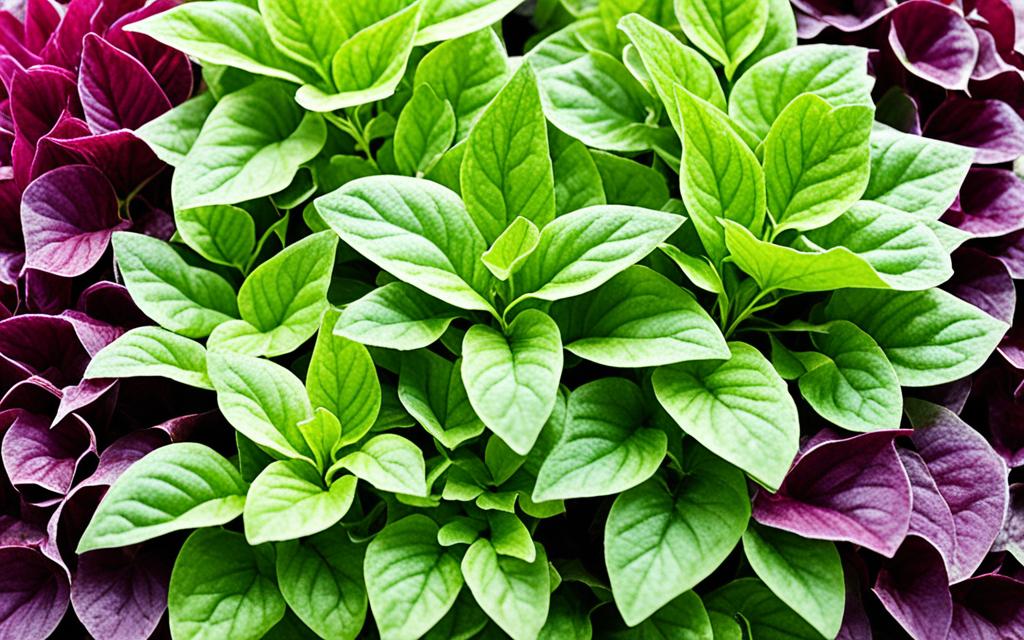
“Sorrel is a versatile and nutritious herb that thrives in hydroponic systems, offering gardeners a range of flavorful options to enhance their culinary creations.”
Nutritional Benefits of Hydroponic Sorrel
Hydroponic sorrel is a nutritional powerhouse. It’s full of vitamins, minerals, and antioxidants. It’s a great source of vitamin A, important for healthy vision and organ function. It also has a lot of vitamin C, which helps keep the immune system strong and aids in healing wounds.
Hydroponic sorrel is also packed with potassium, a mineral that keeps blood pressure in check and supports heart health. Plus, it’s full of antioxidants. These protect the body from harmful stress and inflammation, keeping cells healthy.
“Sorrel is a true nutritional powerhouse, offering a wealth of essential vitamins, minerals, and antioxidants that can support overall health and well-being.”
If you want to get more nutrients or boost your body’s defense, hydroponic sorrel is a great choice. Adding it to your meals brings many nutritional benefits. It’s also delicious, making it a great way to enjoy good health.
Setting Up a Hydroponic System for Sorrel
To grow hydroponic sorrel, you need the right hydroponic system. The nutrient-film technique (NFT) and the deep floating technique (DFT) are great options. They give sorrel the perfect growing conditions.
Types of Hydroponic Systems for Sorrel
- Nutrient-Film Technique (NFT): This method uses a steady flow of nutrient-rich water over the roots. It makes sure the plants get all the nutrients they need.
- Deep Floating Technique (DFT): Known as the raft system, DFT floats the roots in a deep tank of nutrient water. This helps the plants absorb nutrients well.
Essential Components and Equipment
Choosing a hydroponic system means getting the right parts and gear for your sorrel:
- Grow trays or channels for the plants
- Hydroponic growing media like rockwool or biostrate pads for the roots
- A nutrient solution reservoir to feed the plants
- Grow lights for the plants to grow well
- Water pumps, tubing, and plumbing for the nutrient solution
With these key components, you can make a great hydroponic setup for your sorrel. Make sure to research and follow the best practices for your chosen system. This will help your hydroponic sorrel grow well.
Seed Selection and Germination
Choosing the right seeds is key when starting a hydroponic sorrel garden. Red-veined sorrel is a top choice because it germinates well and looks great. It does well in hydroponic setups, perfect for indoor gardeners.
Choosing the Right Sorrel Seeds
Start by finding sorrel seeds for hydroponics of high quality. Make sure they’re labeled as good for hydroponics. These seeds are treated to grow well in soilless setups.
Germination Process and Requirements
After getting your germinating sorrel seeds, prepare the growing medium. Soak rockwool cubes or biostrate pads in a nutrient-rich solution, then let the water drain. Plant one to two hydroponic sorrel seed per cube, covering them with a thin layer of medium.
Germination takes about 14 days, until the sprouts are 3 inches tall. Choosing the right seeds and conditions is key for a healthy hydroponic sorrel garden.
“Choosing the right sorrel seeds and providing the optimal germination conditions are crucial steps in setting up a successful hydroponic sorrel garden.”
Growing Environment for Hydroponic Sorrel
To grow hydroponic sorrel well, you need the right conditions. This means looking at temperature, lighting, and how much moisture the plants get.
Sorrel microgreens do best in cooler temperatures, between 60-70 degrees Fahrenheit. This makes them perfect for indoor growing, where you can control the environment. They need about 6-8 hours of indirect sunlight per day. If there’s not enough natural light, you might need to add extra lights.
Keeping the soil moist but not too wet is key for sorrel. Check on the plants often and adjust the moisture as needed. This way, you make sure your hydroponic sorrel grows strong and healthy.
| Growing Factor | Optimal Range |
|---|---|
| Temperature | 60-70°F (15-21°C) |
| Lighting | 6-8 hours of indirect sunlight per day |
| Moisture | Consistently moist, but not waterlogged |
By keeping the temperature, lighting, and moisture right, you can create the best environment for your hydroponic sorrel. This leads to vibrant, nutrient-rich harvests.
Nutrient Requirements for Hydroponic Sorrel
To grow healthy hydroponic sorrel, you need to balance essential nutrients carefully. These plants have specific needs for optimal growth and productivity.
Essential Nutrients and Their Roles
Sorrel plants need various nutrients for growth. Nitrogen helps with leaf growth. Phosphorus is key for roots and strength. Potassium fights stress and disease. Calcium and magnesium are important for cell structure and making chlorophyll.
Preparing and Monitoring Nutrient Solutions
It’s vital to get the nutrient solution right for hydroponic sorrel. Growers must mix the solution carefully, keeping the right balance of nutrients. Checking the pH and electrical conductivity (EC) of the solution is crucial. This keeps the plants growing well.
| Nutrient | Role in Sorrel Growth | Recommended Concentration |
|---|---|---|
| Nitrogen (N) | Supports foliage growth | 50-100 ppm |
| Phosphorus (P) | Enhances root development and overall vigor | 30-60 ppm |
| Potassium (K) | Helps the plant withstand stress and disease | 40-80 ppm |
| Calcium (Ca) | Essential for cell structure and chlorophyll production | 50-100 ppm |
| Magnesium (Mg) | Supports chlorophyll production and enzyme activity | 20-40 ppm |
Knowing what hydroponic sorrel nutrient requirements are helps growers create the best conditions. By preparing and monitoring the nutrient solutions for hydroponic sorrel well, you ensure the essential nutrients for sorrel are in balance. This leads to a healthy and abundant harvest.
Lighting Needs for Optimal Sorrel Growth
Proper lighting is key for growing hydroponic sorrel. Sorrel microgreens need 6-8 hours of indirect sunlight daily for best growth. But, in indoor setups with little natural light, extra grow lights are a must.
Types of Grow Lights for Hydroponic Sorrel
For hydroponic sorrel, LED lights with a color temperature of about 5500K work best. These energy-saving LED lights mimic natural sunlight. They help sorrel plants grow well while using less energy and creating less heat.
Other good grow light choices for hydroponic sorrel include:
- Fluorescent lights: These are traditional but produce more heat and use less energy than LEDs.
- High-Intensity Discharge (HID) lights: HID lights, like metal halide or high-pressure sodium, give enough light for sorrel. But, they make more heat and use more energy than LEDs or fluorescents.
When picking grow lights for hydroponic sorrel, think about light intensity, spectrum, and energy use. This ensures your plants grow well and helps keep your energy bills down.
Water Management in Hydroponic Sorrel Cultivation
Getting the water management right is key for growing hydroponic sorrel well. Sorrel likes its soil to stay moist but not too wet. This can cause root rot and other problems. It’s important to keep an eye on the water quality and pH levels to help the plants grow strong and healthy.
Maintaining Proper Water Quality
Hydroponic sorrel needs clean, top-notch water all the time. Growers should check the water often to make sure it’s good for the plants. They should look at things like oxygen levels, how conductive the water is, and if there are any bad stuff in it.
Monitoring and Adjusting pH Levels
Sorrel does best in a slightly acidic to neutral soil, between 6.0 and 7.0. Growers need to watch the pH levels of the water closely. If the levels get off, they should add something to fix it. This could be acids or bases.
By focusing on water management, growers can make sure their hydroponic sorrel gets the right nutrients. This helps the plants stay healthy and boosts their production. Keeping an eye on water quality and pH levels is a big part of growing hydroponic sorrel successfully.
“Proper water management is the foundation of a thriving hydroponic sorrel garden.”
Hydroponic Sorrel
Growing sorrel hydroponically has many benefits for home and commercial growers. This method lets you produce food all year, uses less land and water, and controls the growing conditions for better health and yield.
Hydroponic sorrel is great for the planet. It cuts down on water use and reduces the harm traditional farming does to the environment. Plus, it can reuse water, making it even more eco-friendly.
You can grow hydroponic sorrel in many ways, from small indoor setups to big vertical farms. This is perfect for those with little space or big commercial growers wanting more from their land.
The Advantages of Hydroponic Sorrel Cultivation
- Year-round production, independent of seasonal changes
- Reduced land and water usage compared to traditional soil-based farming
- Precise control over the growing environment, including nutrients, pH, and temperature
- Potential for higher yields and improved crop quality
- Adaptable to a range of setups, from small-scale home gardens to large-scale vertical farms
Hydroponic technology lets growers make sorrel in a way that’s good for the planet and efficient. This means a steady supply of tasty and healthy sorrel for everyone. As people want more local, green food, hydroponic sorrel is becoming key in farming today.
| Cultivation Method | Land Usage | Water Consumption | Yield Potential |
|---|---|---|---|
| Hydroponic Sorrel | Reduced | Reduced | Increased |
| Traditional Soil-based Sorrel | Higher | Higher | Relatively Lower |
“Hydroponic sorrel cultivation is a game-changer, allowing growers to produce this nutrient-rich herb in a sustainable and efficient manner, year-round.”
Pest and Disease Management
Hydroponic sorrel is usually tough and easy to care for. But, it can face problems with pests and diseases. Growers need to watch their plants closely and take steps to prevent issues. This keeps their hydroponic sorrel healthy and productive.
Common Pests and Diseases Affecting Sorrel
Hydroponic sorrel can get attacked by pests like aphids, whiteflies, and spider mites. These bugs can harm the plant by eating its leaves, slowing its growth, and lowering the quality of the crop. Fungal diseases such as powdery mildew and leaf spot can also hit hydroponic sorrel. These diseases cause the leaves to turn color and make the plant weaker.
Preventive and Control Measures
- Keep growing conditions right: Make sure the temperature, humidity, and nutrients are just right. This makes it hard for pests and diseases to thrive.
- Check plants often: Watch your hydroponic sorrel for any signs of bugs or diseases. Fix problems quickly.
- Use natural pest control: Bring in helpful insects or use safe pesticides to fight pests without harsh chemicals.
- Keep things clean: Make sure the growing area is clean, remove any sick plants, and clean equipment to stop diseases from spreading.
- Try companion planting: Plant other herbs or crops that can keep sorrel pests away naturally.
By acting early and using a good plan to fight pests and diseases, growers can keep their hydroponic sorrel healthy and productive. This leads to a big harvest of quality sorrel for eating and medicine.
“Healthy plants lead to a healthy harvest. With the right pest and disease management approach, hydroponic sorrel can thrive and provide abundant and nutritious yields.”
Harvesting Hydroponic Sorrel
Harvesting your hydroponic sorrel at the right time is key to getting the best flavor and nutrition. Cut the leaves when they are 1 1/2 to 2 inches long. This ensures you get the leaves at their best, with the most flavor and soft texture.
Ideal Harvesting Time and Techniques
Use clean, sharp scissors to cut the leaves just above the soil line. This leaves the roots and stems intact. This method lets the plant regrow, so you can keep harvesting throughout the season. Handling the leaves carefully during harvest keeps them fresh and ensures a good yield.
Storage and Preservation Methods
After picking your hydroponic sorrel, store it right to keep it fresh and tasty. Put the leaves in an airtight container and keep them in the fridge for up to a week. This keeps the sorrel’s nutrients and makes it last longer. With the right storage, you can enjoy your homegrown hydroponic sorrel for a long time.
“Proper handling and storage techniques are essential for maximizing the shelf life and ensuring the high-quality of the harvested hydroponic sorrel.”
| Harvesting Technique | Optimal Leaf Length | Storage Duration |
|---|---|---|
| Cut leaves above soil line | 1 1/2 to 2 inches | Up to 1 week in refrigerator |
By following these best practices for harvesting hydroponic sorrel, when to harvest sorrel, and storing and preserving hydroponic sorrel, you can have a plentiful and tasty harvest. This will make your meals more enjoyable and support your health.
Culinary Uses of Hydroponic Sorrel
Hydroponic sorrel is a versatile ingredient that can make many dishes taste better. It has a tangy, lemony flavor. You can use it to add a refreshing twist to salads, sandwiches, and wraps. It also goes well with rich, creamy foods.
Sorrel in Salads, Sandwiches, and Wraps
Sorrel microgreens are great in salads. They add a bright, refreshing taste. They go well with many salad ingredients like crisp greens, juicy tomatoes, creamy avocado, and protein-rich toppings.
Sorrel can also make sandwiches and wraps more flavorful. It adds a burst of taste that brings all the fillings together.
Sorrel in Soups, Stews, and Grilled Dishes
The tangy flavor of hydroponic sorrel is perfect for soups, stews, and grilled meats and fish. You can blend it into soups or use it as a garnish. It adds a zesty touch and looks good on the plate.
Its acidity balances the richness of stews and braises. It also goes well with the char and smoke of grilled foods.
Sorrel in Egg Dishes and Baked Goods
Hydroponic sorrel is not just for savory dishes. It’s great with rich, creamy foods in egg dishes, quiches, and baked goods. You can mix it into scrambled eggs or frittatas, or use it on breakfast sandwiches and omelets.
It can even add a unique flavor to muffins, scones, and other baked treats.
Using hydroponic sorrel in your cooking lets you try new and exciting flavors. Whether you want to add a zesty touch to salads and sandwiches or improve savory dishes with its tangy flavor, this herb is a great addition to your kitchen.
Vertical Farming and Urban Gardening with Hydroponic Sorrel
Hydroponic sorrel is perfect for vertical farming and urban gardening. It grows well in soilless systems, making it great for small spaces like indoor areas or rooftop gardens.
Benefits of Vertical Farming and Urban Gardening
Vertical farming uses space wisely, giving more produce from less land. It’s also better for the planet by using less land, water, and resources. For city folks and small-scale farmers, hydroponic sorrel is a top choice for growing food at home. It offers fresh, local produce all year.
- Maximizes production in small spaces through vertical stacking
- Reduces environmental footprint by conserving land, water, and resources
- Enables year-round, local access to nutrient-rich hydroponic sorrel
- Supports sustainable urban food systems and community self-reliance
Using vertical farming and urban gardening with hydroponic sorrel changes the game for city folks and small farmers. It lets people control their food supply. It also helps build stronger, greener local food networks.
“Vertical farming with hydroponic sorrel is a practical and innovative solution for urban areas, allowing us to grow nutrient-rich produce in limited spaces.”
Troubleshooting Common Issues in Hydroponic Sorrel Cultivation
Growing sorrel hydroponically can be rewarding, but it comes with challenges. It’s important to watch out and fix problems quickly. This keeps your hydroponic sorrel plants healthy and productive.
One big issue is the wrong pH levels. Sorrel likes a slightly acidic environment, with a pH of 6.0 to 6.5. If the pH is off, it can cause nutrient problems or toxicities. This hurts the plants’ growth and health. Testing and adjusting the pH of the nutrient solution is key to solving these problems.
Nutrient imbalances are another problem. Sorrel needs certain nutrients like nitrogen, phosphorus, and potassium. If these are off, the plants may grow poorly, turn color wrong, or show stress. Watching and tweaking the nutrient solution can fix these issues.
| Issue | Potential Causes | Troubleshooting Strategies |
|---|---|---|
| Stunted growth | – Nutrient deficiency – Improper pH – Environmental stress |
– Adjust nutrient solution – Test and balance pH – Optimize growing conditions |
| Leaf discoloration | – Nutrient imbalance – Pests or diseases – Environmental factors |
– Analyze nutrient levels – Inspect for pests/diseases – Adjust temperature, light, or humidity |
| Poor root development | – Insufficient oxygen – Root rot or pathogens – Improper water management |
– Ensure adequate aeration – Treat root issues – Monitor and adjust water levels |
Fixing these common issues in hydroponic sorrel cultivation quickly helps keep your plants healthy and productive. This leads to a great harvest of this tasty and nutritious herb.
Conclusion
Hydroponic sorrel is a great way to grow a tasty and healthy herb. It lets growers produce sorrel all year, no matter the weather or land. This guide covered everything from picking the best seeds to managing nutrients and pests.
For both home gardeners and commercial growers, adding hydroponic sorrel can bring delicious and nutritious greens. It also helps make our food system more sustainable. By using the tips from this guide, you can enjoy the benefits of growing hydroponic sorrel.
The need for fresh, healthy food is growing. Using hydroponic sorrel can help meet this demand. By choosing soilless farming, growers can open new doors and share this versatile herb with more people. This can lead to a future where growing food sustainably and easily is common.
